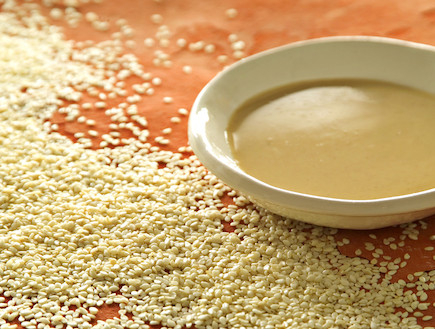
One of the staple ingredients in Middle Eastern and Mediterranean cuisines is tahini – a velvety, earthy paste made from ground sesame seeds. Tahini is rich in calcium, magnesium, potassium, lecithin and iron, and is high in vitamin E and B1, B2, B5 and B15. It has 20% complete protein, which is more protein than in most nuts.
It can be enjoyed either in its raw form or combined with other ingredients to create savory dips, condiments, salads, or desserts.
In it’s raw form, tahini has a consistency that is a little thinner than almond butter. It can be eaten with a spoon or as a spread on a piece of bread. Mixed with some honey or date molasses it yields a halvah-like sweet spread – the Middle Eastern version of peanut butter and jelly sandwich.
Halvah, in case you’ve never heard of it, is a Middle Eastern sweet delight made of tahini, usually in the form of large slabs. Persian halvah has a softer, smoother consistency. Basic halvah is made from raw tahini, sugar, and vanilla and can be found in supermarkets and in Middle Eastern stores in the U.S. Some other traditional halvah flavors, such as marble (chocolate swirl), chocolate, and pistachio are mostly found across the Middle East and in some Mediterranean countries. In recent years in Israel, halvah, like many other traditional and local specialties, has become a gourmet item sold in boutique and specialty stores. The number of halvah variations you can find is enormous. Nuts, chocolate, coffee, dried fruit, spices, candies, etc. are just some of the creative variations you may come across. The picture below, showing a large selection of halvah blocks, was taken at a halvah store in the Machaneh Yehuda market in Jerusalem.
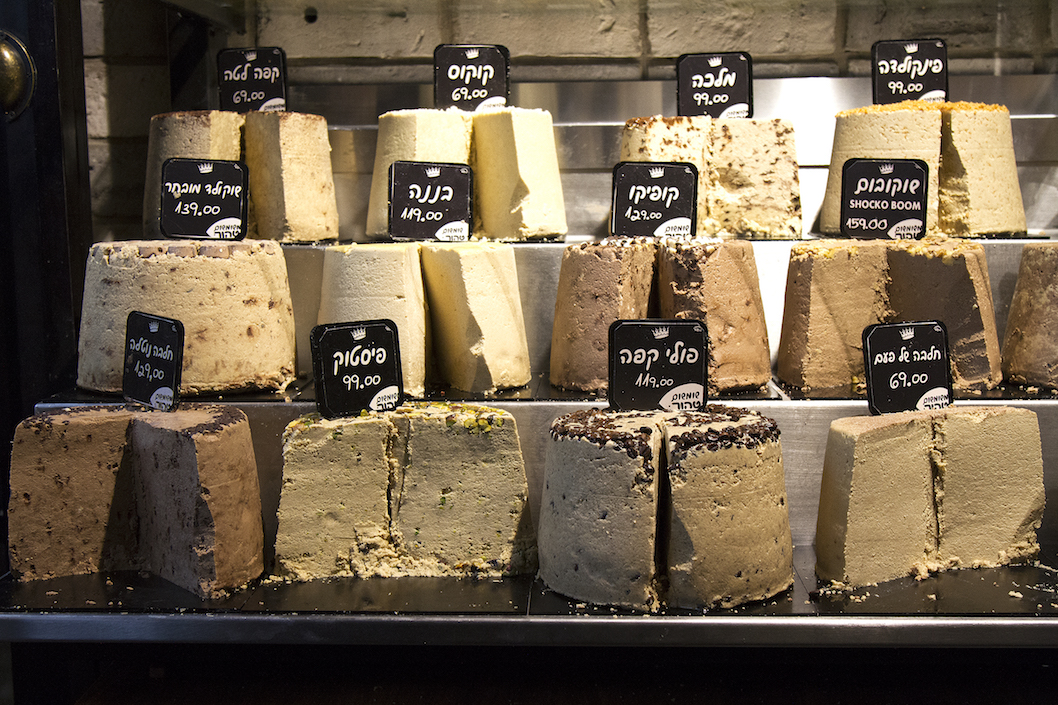
At home, we like to drizzle raw tahini on vanilla ice cream. It makes it taste like halvah ice cream. Another Middle Eastern dessert we love making at home is Halvah Cookies. It’s a real treat saved for special guests.
In the U.S, tahini is known mostly in its savory form, as a Middle Eastern dip that is sometimes combined with Hummus. But good tahini dip doesn’t need the hummus in order to shine. It is delicious on its own and can be served with raw vegetables, or as a savory spread in sandwiches (with or without hummus). It may also be drizzled over cooked meats and veggies. Tahini is also a key player in baba gahnoush spread. In Middle Eastern cooking, tahini is sometimes added to meat, chicken, and vegetable dishes and baked in the oven. Stay tuned for some of my favorite recipes that feature tahini. But in the meantime, here is my recipe for tahini dip
Ingredients:
½ cup raw tahini paste (found in health food or Mediterranean/Middle Eastern grocery stores)
Juice from 1 lemon
¼ tsp salt
1/8 teaspoon black pepper
1 clove garlic, crushed
½ cup water
Preparation:
Combine all the ingredients together in a medium sized bowl, and mix well until a smooth paste is formed. You may also choose to use a blender to mix the ingredients.
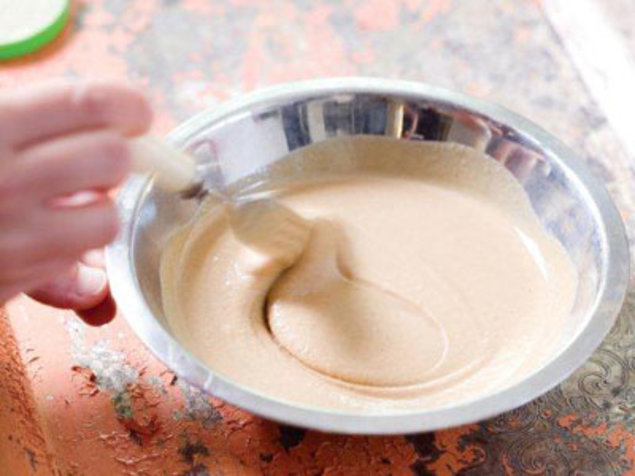
In either case, the consistency should be that of a dip. If the paste is too thick, add more water and stir. If too loose, add a little more of the raw tahini. You can keep the prepared tahini in the fridge in an airtight container for up to a week. The dip gets thicker the following day and is better used as a spread. If you want to thin it out, add a little bit of water and mix well.
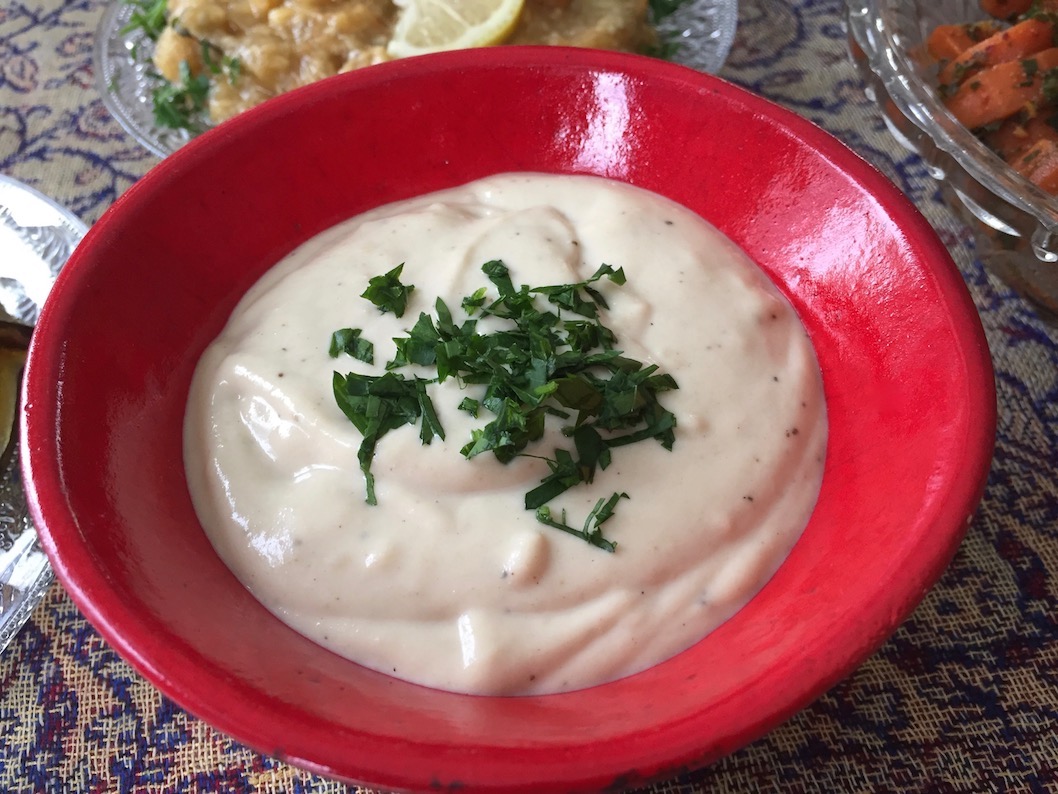
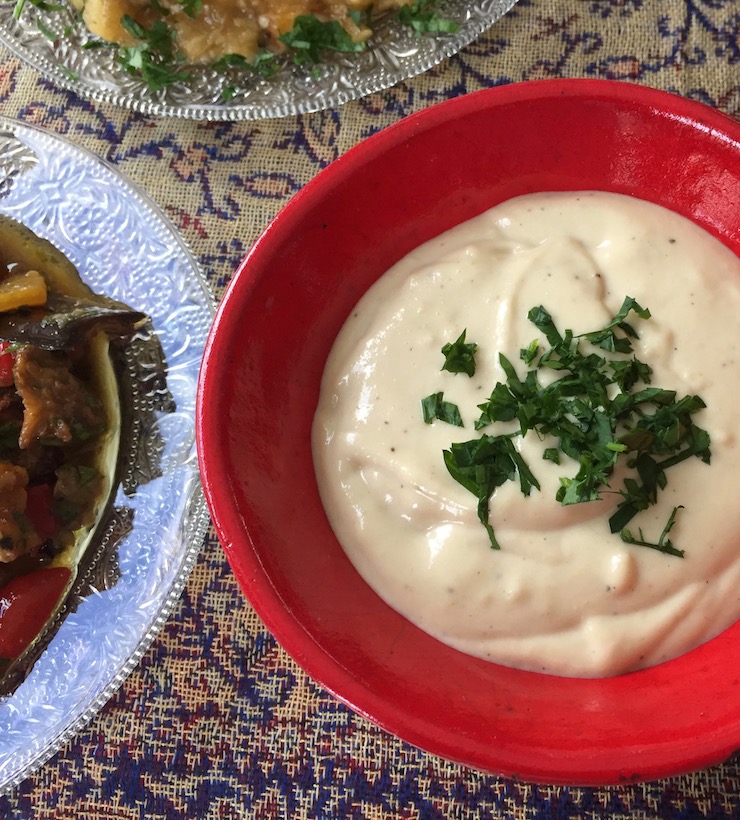
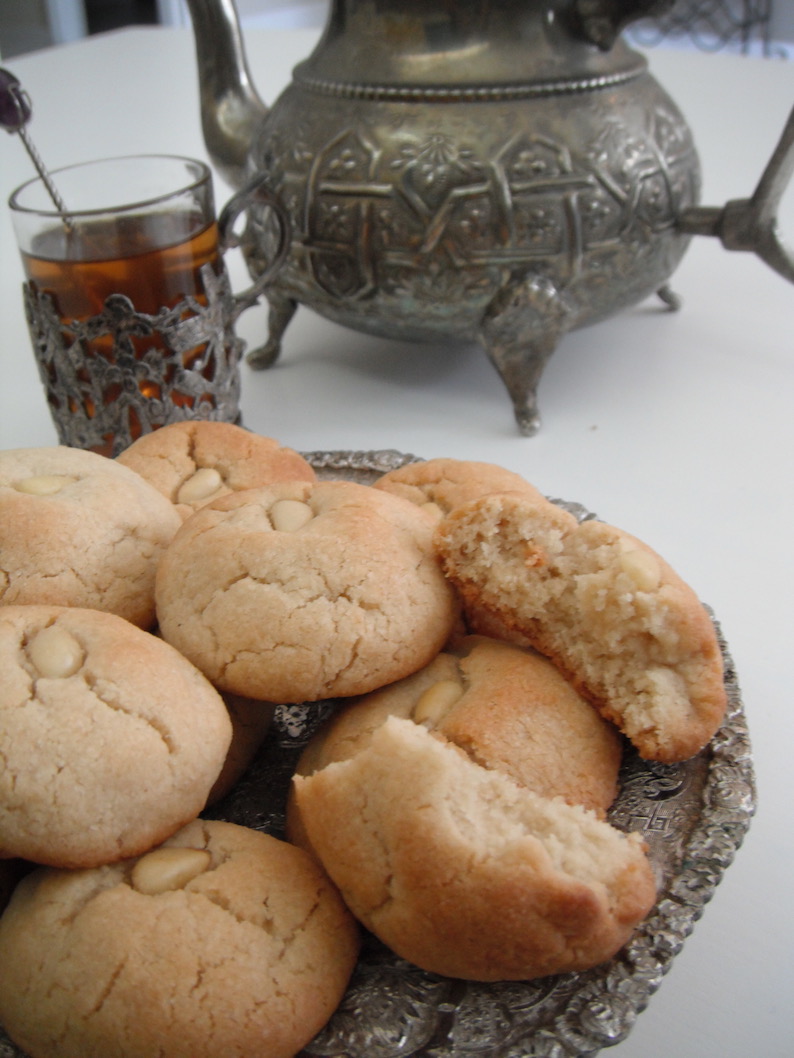
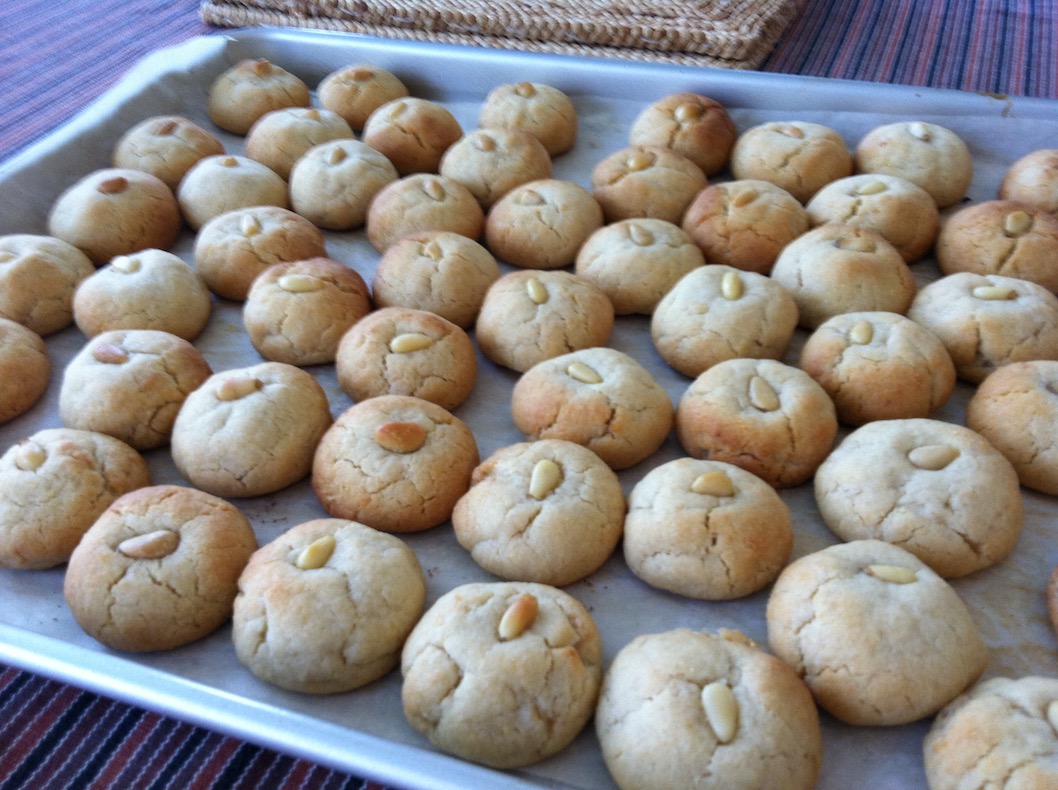
Great post Tali, I always have tahini in the pantry but have never thought of just spreading it on toast or using it solo in other ways – so thanks for the inspiration ?
You are very welcome, Laura. Enjoy!!